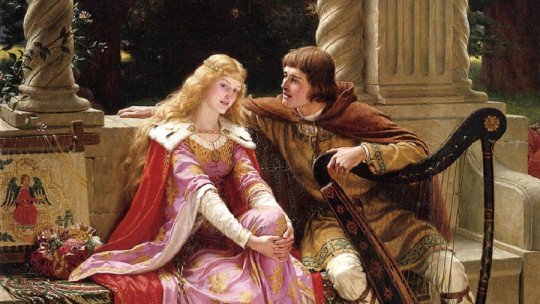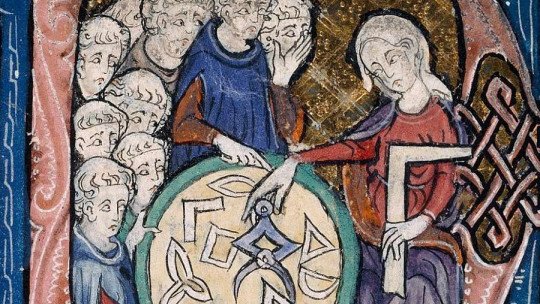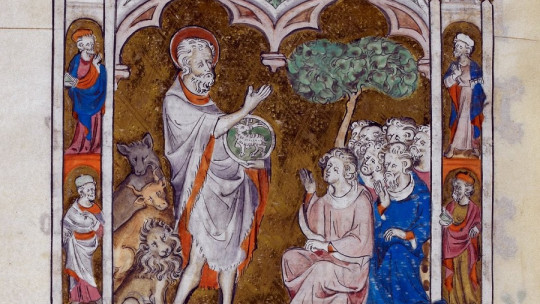
Time has been a concept extensively studied throughout history. Many intellectuals have attempted to discover the true nature of this idea, and have invariably clashed with the different visions that men and women of each era held on the matter.
The intention of this article is not to offer a detailed description of the concept of time at a scientific level. We are interested, rather, in the perception that society had of this highly subjective element at a given time; specifically, in the Middle Ages. How did medieval men and women view time? Join us to discover it.
What was the idea of time like in the Middle Ages?
The eminent medievalist Jacques Le Goff (1924-2014) maintained that in the Middle Ages there was no single representation of time, but rather, this concept was disintegrated into several perceptions. Furthermore, and as Aron Gurevich points out in his magnificent essay The categories of medieval culture, this “temporal plurality” was, at its core, especially contradictory. But what were these diverse perspectives that medieval humans had of time? And, what is more surprising: is it possible to have several perceptions of time?
In today’s society, we are used to perceiving time as a linear element, which goes from the past to the future passing through the present moment. In other words, we see time as something that is always escaping our hands, closely linked to the famous Tempus fugit Latin, “time flees.” However it was not always so. As we will see below, this perception is the result of the birth of the mercantile society that began to develop in the middle of the Middle Ages and whose crucial invention was nothing less than the mechanical clock, which emerged in the towns during the 13th century.
The contradictions of medieval time
We have already commented that medieval society had a plural and, furthermore, contradictory concept of time. What do we mean by that? Basically, as heir to several traditions, the Middle Ages received influences from various cultures that, ultimately, could be contradictory to each other.
Cyclic time
From ancient times, medieval society retained the concept of cyclical time, which connected human beings with nature and the eternal future of things. Cyclic time is time that is constantly destroyed and regenerated, so it lacks a beginning and of course an end. It is the characteristic time of primitive societies, closely linked to agriculture and, therefore, to the rhythms of the seasons, death and life.
It is obvious that, as an eminently rural society, the Middle Ages could not be separated from this concept of time, since it was what governed field work, to which the vast majority of the population was dedicated. There was a profusion of so-called “agricultural calendars” at the time, captured in countless supports (codices, church reliefs, wall paintings, tapestries…), in which the tasks corresponding to each month or season of the year are described. A good example, both for its conservation and its beauty, is the one known as the Creation Tapestry, which is located in the Cathedral of Girona (Spain).
The mythical time
This cyclical time, linked to harvests, childbirth, illness and death, is clearly perceived by medieval men and women, since it describes the reality in which they move. However, there is another time, the so-called “mythical time”, equally cyclical (since it never ends and always returns) but which, at the same time, connects the two great medieval temporal realities: terrestrial time, in which the individual, and sacred time, related to God and, therefore, to eternity.
In all cultures, myth and ritual connect the present of the human being (that is, his earthly time) with the time of divinity During the recreation of the myth or the celebration of the rite, the individual connects with a time that, although symbolically past, is always present; for example, during the Eucharist, when the faithful listen to the acts of Christ and later take communion. That time is neither present, nor past, nor future: it only belongs to God and the community.
For medieval men and women it was very important to feel identified with that mythical time, since it was the guarantor of salvation. Therefore, even though the individual lived his existence on an earthly plane, he always had his sights set on that time of “no-time”, the only bastion of eternal happiness.
linear time
But, beyond cyclical time (that of natural rhythms, inherited from preceding agricultural cultures) and mythical time (that of religion connected with the faithful), there was another time, linear time, which, ultimately, It is what mainly characterizes the Christian faith.
According to the Bible, creation, as a product of God, has a beginning And, also according to the Bible, this same world will have an end, which will materialize when the second coming of Christ and the consequent Final Judgment take place. After that, the end of time will come, so all “times” will end and will be confused with divine time, which is, according to medieval theologians, the only “real” time.
Many of these thinkers tried by all means to harmonize the apparent contradiction of the existence of a cyclical time (eternal, that always returns) and a linear one that will disappear with the Apocalypse. In fact, during the 13th century the idea of time as an eternal cycle regained strength, especially linked to the philosophy of Averroes (1126-1198) and, above all, to Siger of Brabant (1235-1284), whose theories related to time cyclical were condemned by the Church.
The “universal drama”
Gurevich, in the aforementioned work, mentions an aspect that seems essential to us to understand the concept that medieval men and women had of time. And it is none other than the (lack of) individuality.
Medieval human beings did not aspire, as we can, to a personal and unique life experience. Quite the contrary; The subject felt immersed in a collective (Christianity in this case), of which he was a part as the foot is part of the organism and cannot function without it. Therefore, the individual follows the established models, marked by the will of God, and He tries to scrupulously follow his duty within the great macrocosm It is his role in what has been called the great “universal drama”, understanding drama as a representation studied and prepared in detail.
Because God was the only one responsible for the succession of events; He was the great director of the universal work. For this reason, medieval men and women saw signs everywhere, which “broke” the temporal barrier and penetrated, from divine time (the stabilizeswhat never changes), to terrestrial time (the mutabiliteschanging events).
Juxtaposed times
If the hand of God sent signals to terrestrial time and everything had its correlation with a supraterrestrial idea, this meant that the various times communicated and even “touched.” An animal was not only an animal, it was the symbol of a concept or a teaching. On the battlefield, the appearance of a splendid sun in the middle of a cloudy sky meant that God was manifesting himself in favor of the army. The reality of medieval men and women was dual, since there was always a meaning beyond the apparent
In the plastic representations, these “juxtaposed times” are perceived with total clarity. The artist does not establish boundaries between the real and the divine world, and a saint may appear simultaneously with a historical figure, or the succession of scenes in a narrative may be altered in order to give more force to the main event. In the same way, in books of chivalry mythical heroes are mixed with real beings from different eras, without disturbing the reader’s common sense. And that was only possible because the medieval reader was completely accustomed to this “disordered” view of time.
The appearance of the clock and the modern concept of time
In the aforementioned essay by Gurevich, a crucial invention is outlined for the change that society in the late Middle Ages underwent in terms of its concept of time: the mechanical clock.
Emerging in the thriving cities of the 13th century, this object forever revolutionized the traditional idea of time that had been maintained until then. Because, from that moment on, time could be calculated exact; That is, human beings were able to “freeze” an instant of that linear time that flowed forward and never stopped.
The repercussions of the establishment of the clock in the towers of the town halls were astonishing, since its appearance took control of time out of the hands of the Church. Until that moment, the passage of days and hours was closely linked to religious rites and the rhythms of harvests ; With the new invention, human beings (specifically, human beings in cities) became masters of time and could, in this way, dispose of it.
We can affirm, without fear of being wrong, that the development of clocks meant a turning point in the medieval concept of time and inaugurated our current perception of it. And perhaps, who knows, it also had a lot to do with the appearance of such late medieval ideas as the Carpe Diem or the memento mori.








